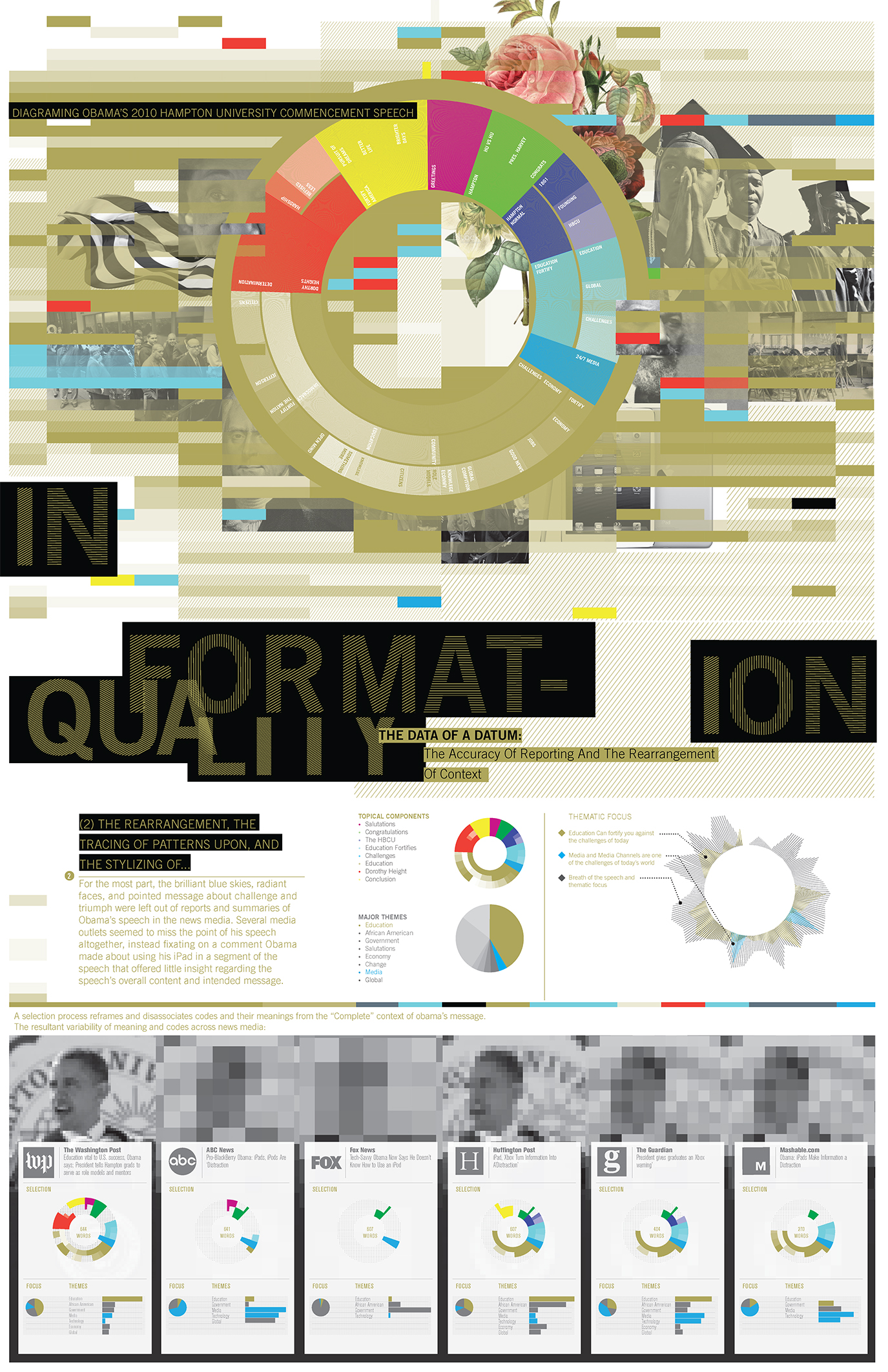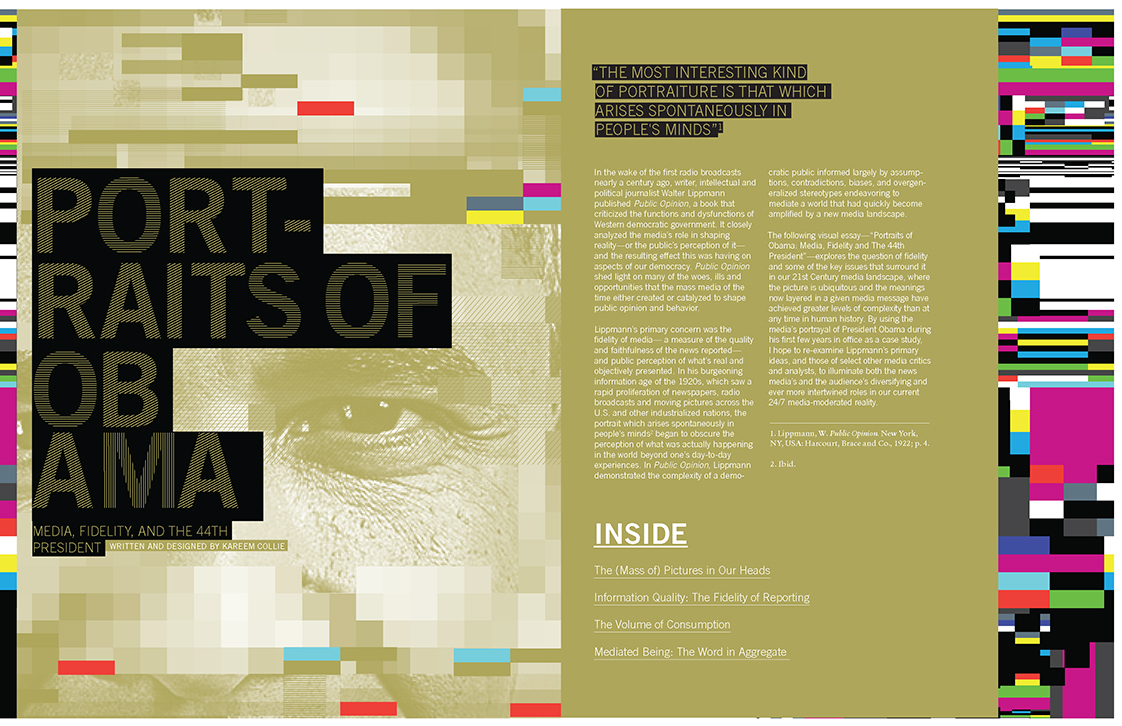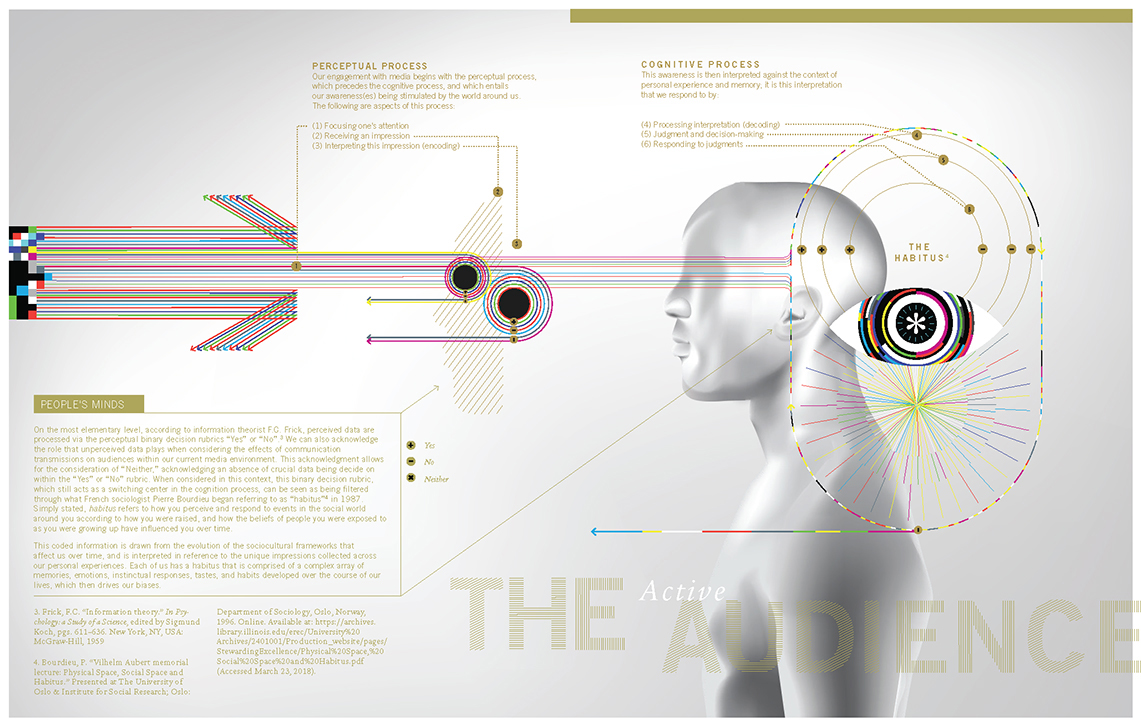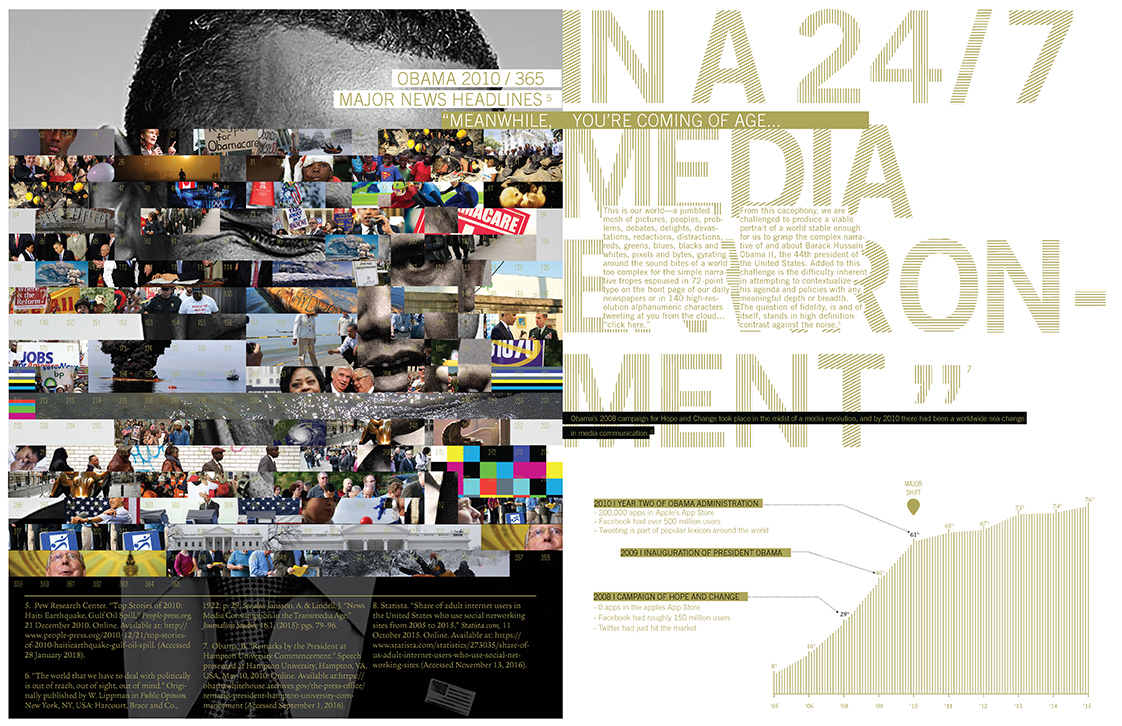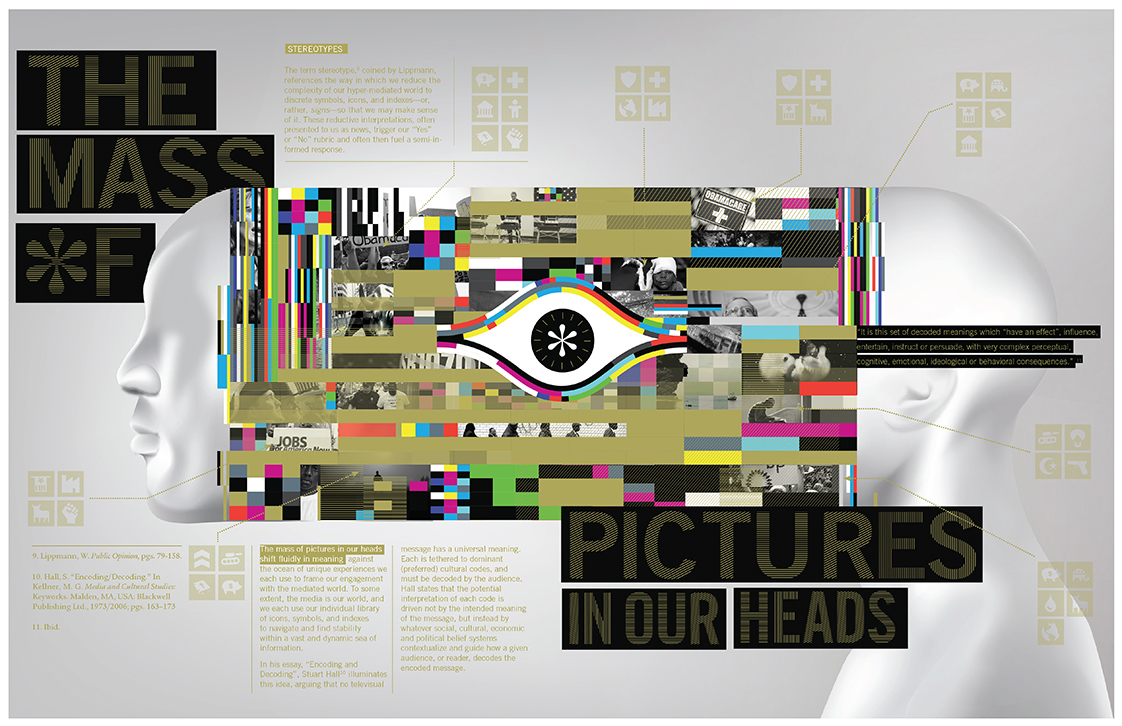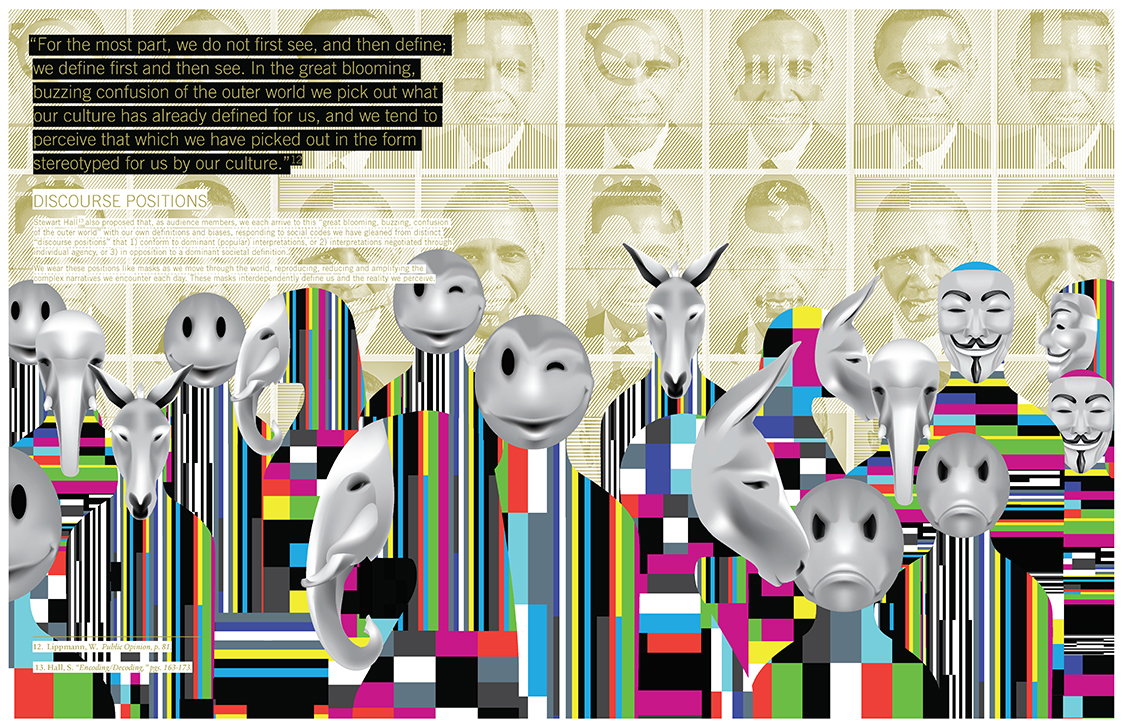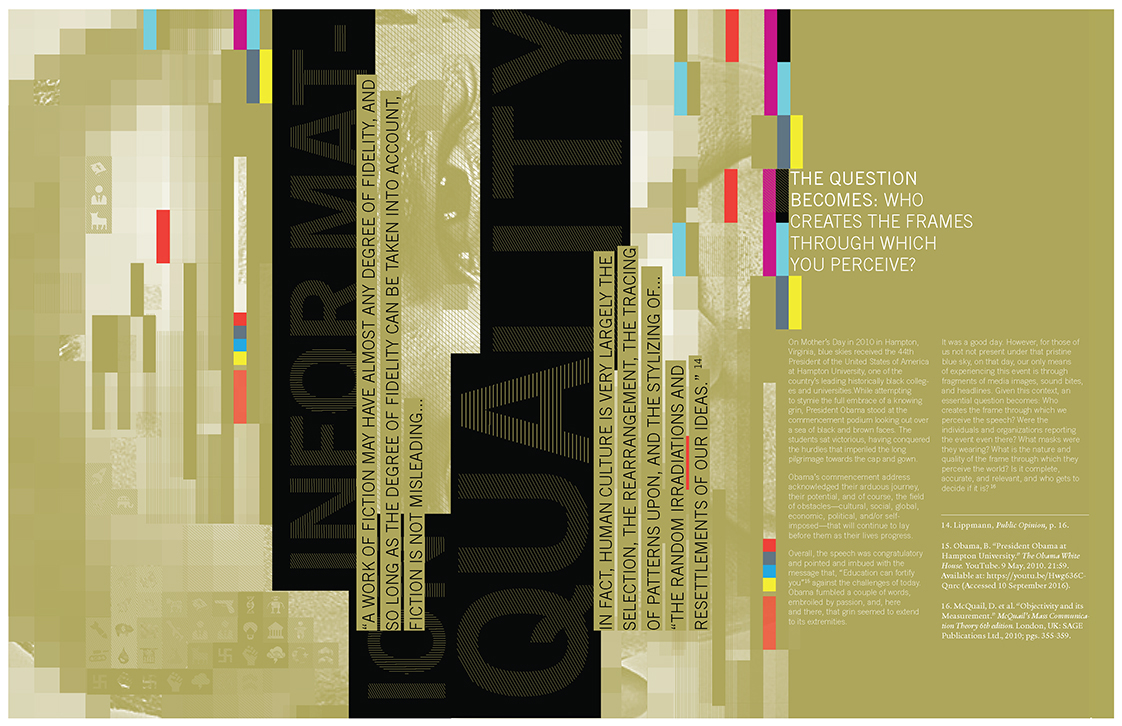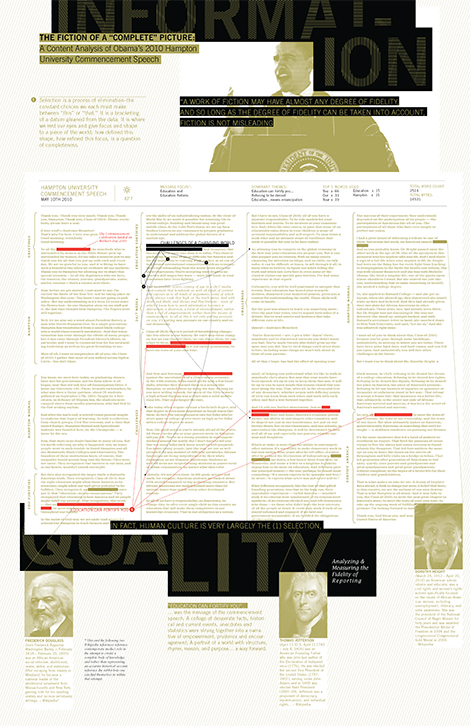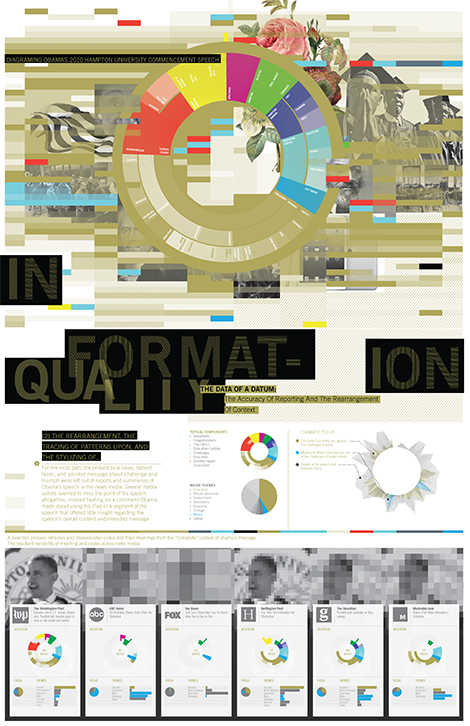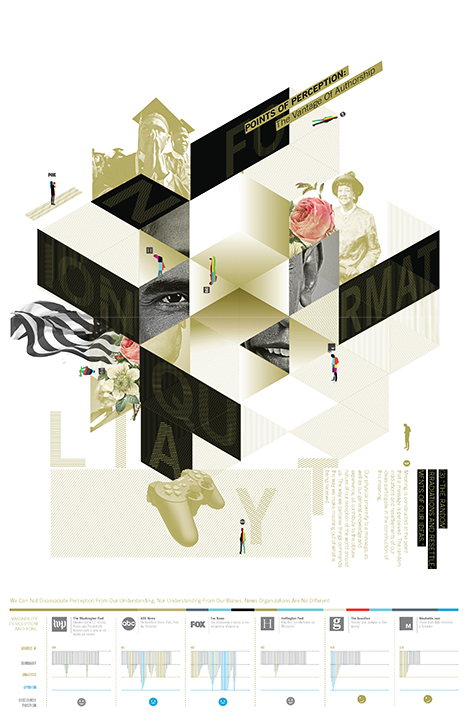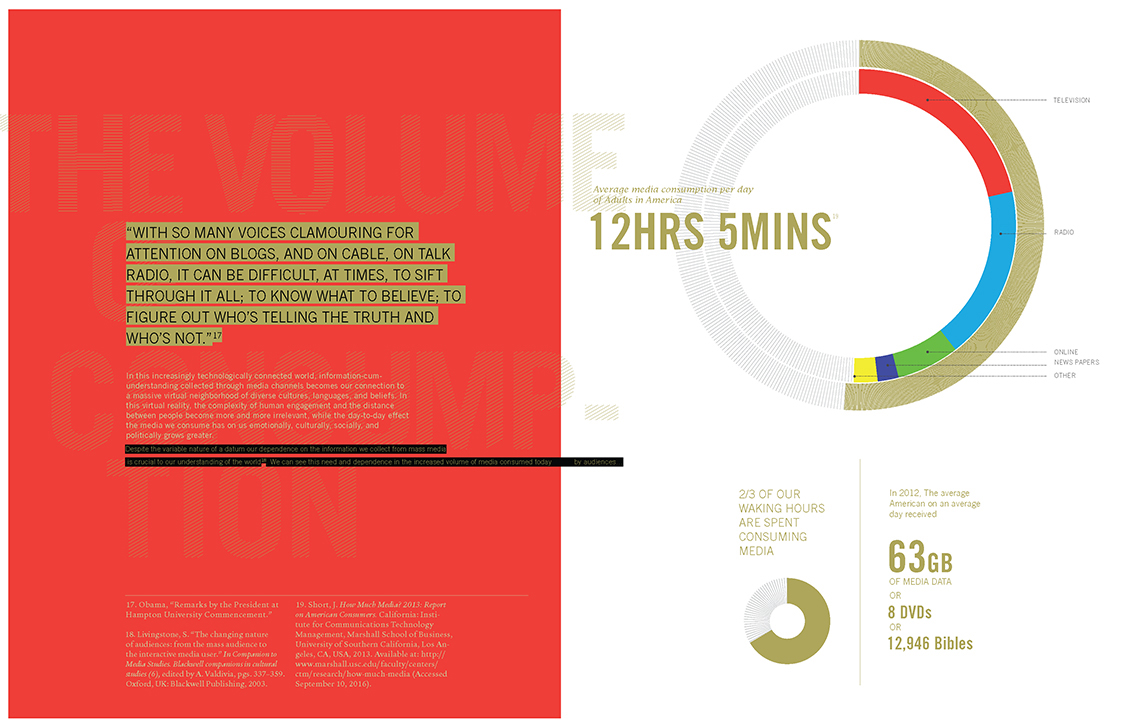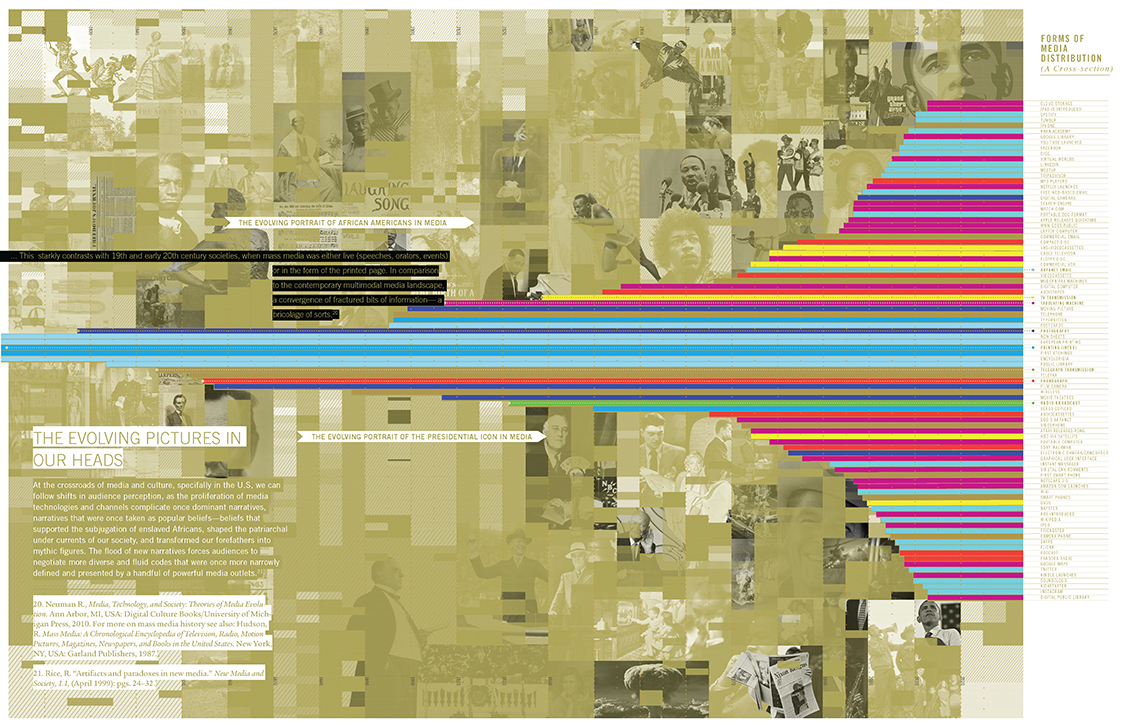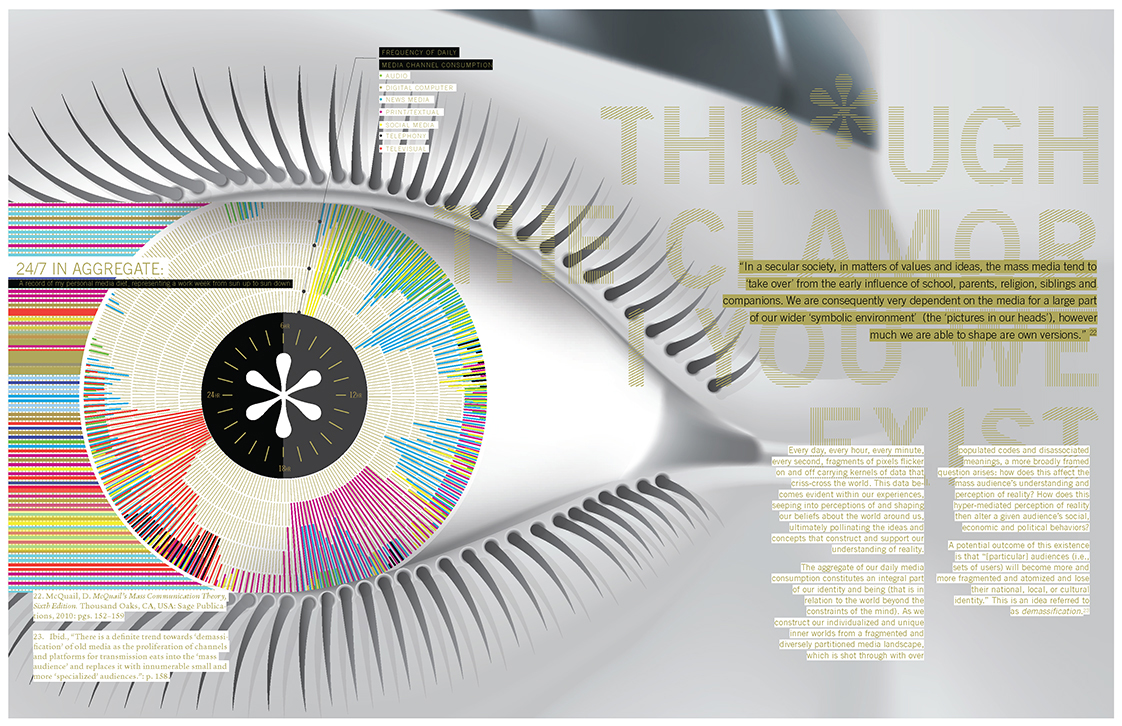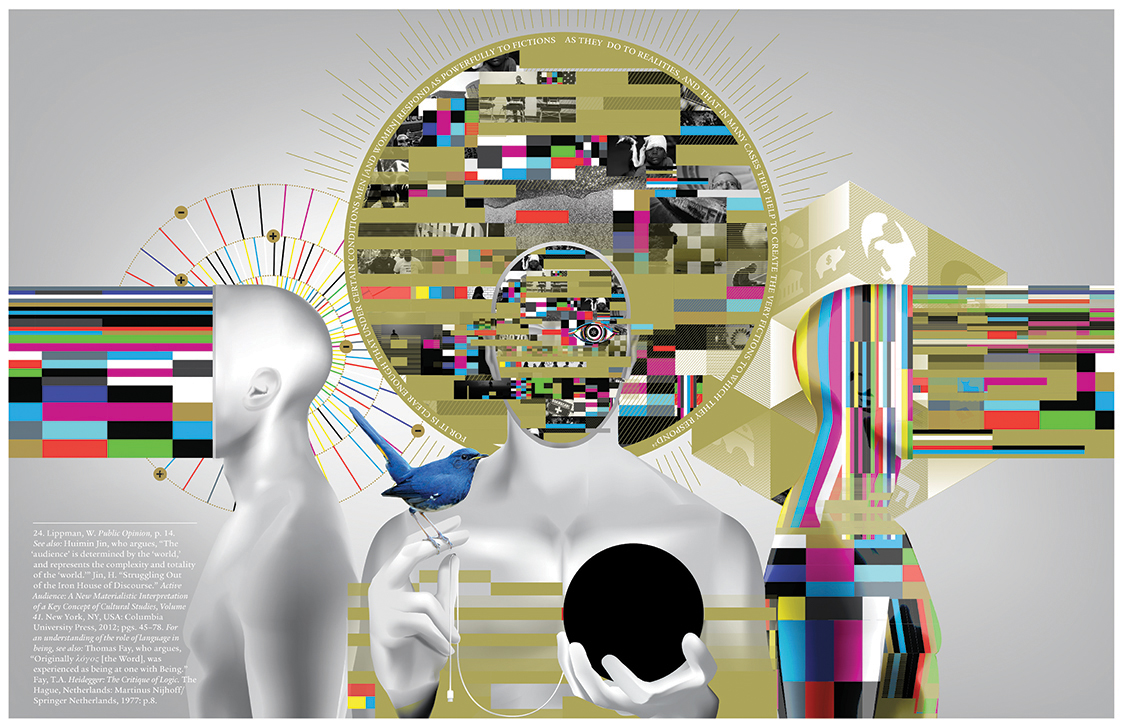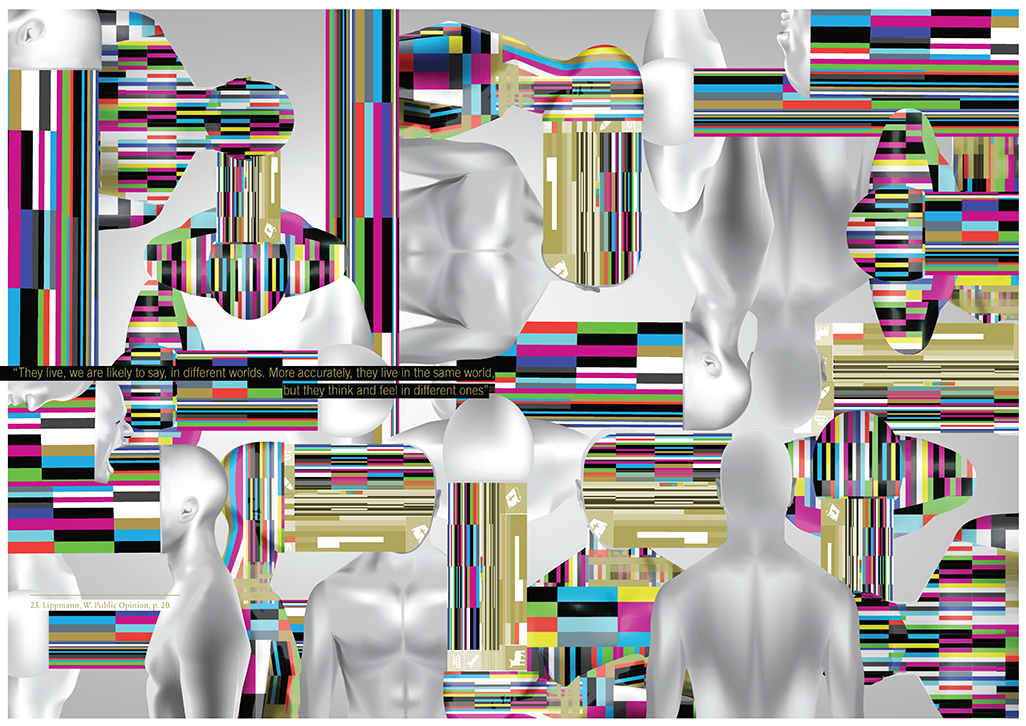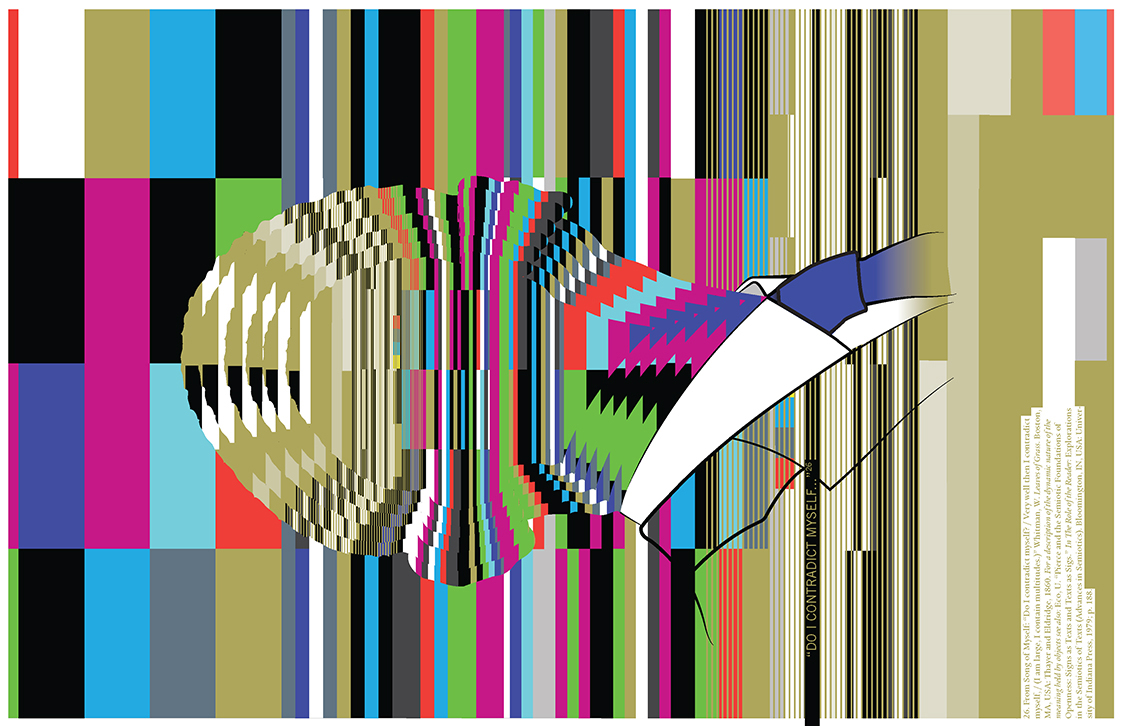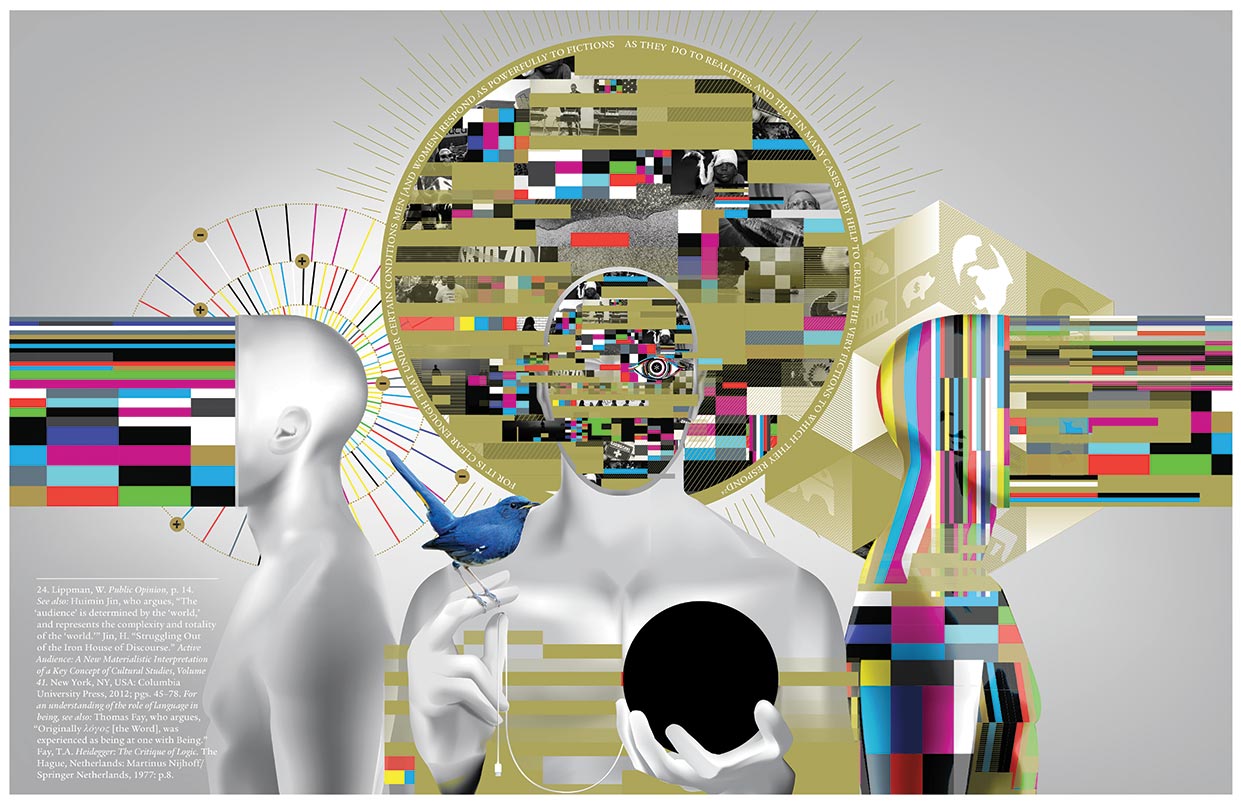PROJECT TITLE :
Portraits of Obama:
Media, Fidelity, and
the 44th President
Portraits Of Obama: Media, Fidelity, and the 44th President
Using Obama as a prism, this essay examines the culture of American mass media, examining the fidelity of news content amongst the ever-growing, ever-fragmenting, modern media landscape. It investigates the audience’s active engagement in the construction of their relationship to reality, the flawed nature of newsmakers and their perceptions of the world, and offers an alternative narrative approach to the construction of the self.
Portraits of Obama:
Media, Fidelity, and
the 44th President
PROJECT SUMMARY :
This essay looks at the culture of American mass media, examining the fidelity of news content amongst the ever-growing, ever-fragmenting, modern media landscape. I use President Obama as a means of investigating the audience’s active engagement in the construction of their relationship to a collective reality, the flawed nature of newsmakers and their perceptions of the world, while offering an alternative narrative approach to the construction of the self.
PROJECT TYPE :
Orientation: Design researcher +
Visual Designer
Project type: Visual Essay
Publisher: Dialectic
Award: Design Incubation
Portraits of Obama: Abstract
“In a 24/7 media environment that bombards us with all kinds of content and exposes us to all kinds of arguments, some of which don’t always rank that high on the truth meter...information becomes a distraction, a diversion, a form of entertainment, rather than a tool of empowerment, rather than the means of emancipation. So all of this is not only putting pressure on you; it’s putting new pressure on our country and on our democracy.” (Obama)
President Obama made this statement in May of 2010, during one of his most tumultuous years in office when financial reform, a healthcare overhaul, and the BP oil spill were few among many of his administration's concerns. The notion of being bombarded by media is not a new one; this idea was often discussed during the last half of the 20th century when watching television became a ubiquitous pastime in America.
However, as media outlets and their potential audience continues to grow, especially in relation to news offerings, the discourse on their societal impact calls for greater scrutiny. As Obama pointed out, media tools and channels of the 21st century place “new pressures on our country and on our democracy.”
CONTENT OUTLINE

CASE STUDY + TEXTUAL ANALYSIS
Information Quality:
Hampton University
Case Study
In this series, I use a speech given by President Obama in 2010 as a case study in the analysis of information quality to propose that we use (1) Completeness, (2) Accuracy, and (3) Perception as a means of analyzing the fidelity of information.
(1) Completeness

(2) Accuracy

(3) Perception

Visualizing Completeness and Accuracy
This page focuses on Accuracy — The larger diagram, at the top, depicts the main themes within Obama's speech and is used as a base to compare and contrast the fidelity with which different media outlets, shown at the bottom, cover, summarize, and use the speech for their own agenda.
